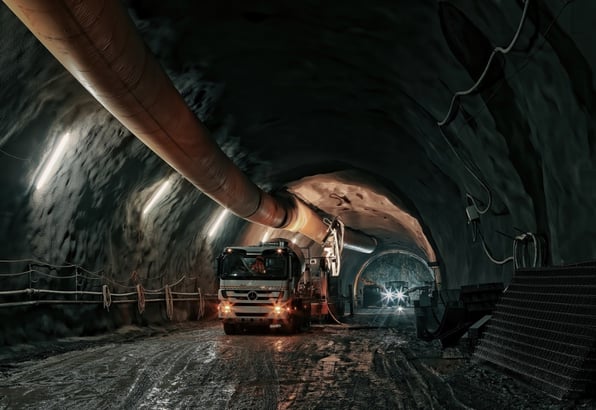Hearing is one of the 5 senses and to many the most important. It enables us to communicate, socialize, and connect and yet millions of people work in an environment where they are exposed to hazardous noise levels, such as those in the mining industry. Although often regarded as a nuisance rather than a danger, these hazardous levels can actually lead to occupational hearing loss – the most common occupational disease in the United States and a problem that should never fall on deaf ears.
It doesn't take much research to uncover the problem of noise induced hearing loss (NIHL) within the US mining industry. In 1997 the National Institute of Occupational Safety and Health (NIOSH) reported that by the age of 50, approximately 90% of coal miners and 49% of metal/non-metal miners had hearing impairment.
Mining noise is an under-reported issue. Though studies show that sounds above 85 decibels (dB) are harmful, depending on factors such as period of exposure, etc., it is still estimated that 80% of US miners work in an environment where the average levels of noise exceeds this 85 dB figure. Scarier still was that approximately 25% are exposed to noise levels of 90+ dB.
Since the beginning of the century, incredible safety advances have been seen in the industrial sector and yet mining still reports the highest prevalence of hazardous noise exposure of any major industry.
Addressing Mining Noise
Mining is an industry based on the extraction of geological materials from the earth. As such, it requires powerful, heavy machinery and destructive techniques, both inevitably generating intense mining noise if not mitigated by noise control. Machines such as pneumatic and percussion tools are a major source of mining noise, operating at dangerous noise levels ranging between 114-120 dB. As you would expect, major extraction tools such as drills and Stageloaders produce high noise levels. Surprisingly, however, ancillary equipment and transport also often generate dangerous levels of noise, with equipment like fans operating at 90-110 dB and haulage trucks at 90-100 dB, both operating above the 85 dB threshold that is generally considered safe.

Most mines have no shortage of large machinery and equipment that produce dangerous levels of noise.
In the mining industry, noise will always be a problem that requires careful monitoring and mitigation. There are however, a number of ways to stifle such an issue with different forms of noise controls. These may include, but are certainly not limited to:
- the simple administrative control of limiting workers to safer periods of exposure;
- replacement or elimination of machines which produce dangerous noise levels; and
- engineering controls with the application of silencers, noise isolation, and deployment of Echo Barriers which can absorb those noises that are likely to give you a headache at the end of the day.
As the US mining industry continues to develop, it is clear that the industry’s companies need to listen over the noise to the issues and evident dangers, to ensure that occupational hearing loss becomes a thing of the past.
Noise Barriers For Mining
Echo Barrier is an innovative portable noise control system designed to mitigate noise in dynamic and sensitive work environments like in mines, reducing noise by up to 43 dB. These portable noise barriers can be used in conjunction with appropriate personal protective equipment and other noise mitigating measures to maximize hearing protection for miners.

